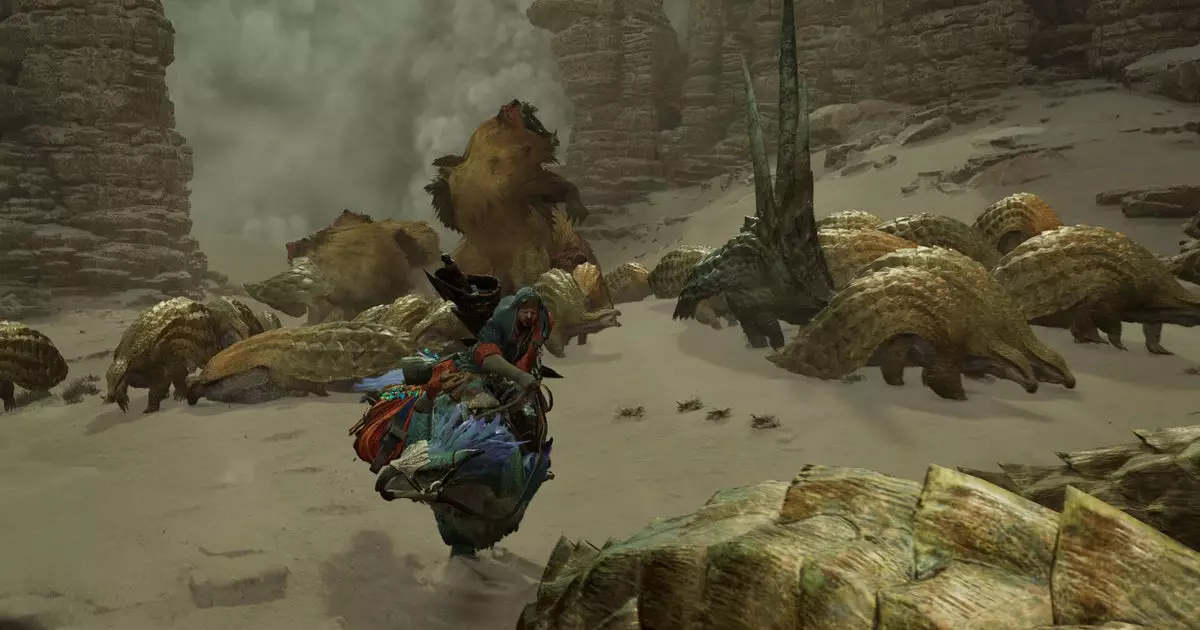The much-anticipated beta for Monster Hunter Wilds has generated considerable excitement and a flurry of discussion among avid gamers. However, amidst the excitement lies a critical observation regarding the game’s combat mechanics, leading to a polarized reception. While character customization, such as the ideal orange-to-white fur ratio for your feline companion, captivates players, several elements of the combat experience have raised eyebrows, particularly regarding the concept of hitstop. This article dives into the gameplay experience, examining how changes in hitstop have influenced player satisfaction and perceptions of the game’s combat.
To appreciate the impact of hitstop in the Monster Hunter series, it is vital to understand what hitstop represents. In essence, hitstop is a brief pause in animation that occurs when an attack connects with an opponent. This mechanical incorporation serves to convey the weapon’s weight and enhance the sensation of power behind the strike. Essentially, it fosters a feeling of immediacy and intensity that can deeply influence a player’s perception of combat effectiveness.
Research by gaming content creators has defined hitstop using empirical comparisons. For instance, in prior titles such as Monster Hunter Generations Ultimate, players experience a substantial hitstop duration—approximately eight frames, allowing time for one to appreciate the attack’s impact. In slower titles like Monster Hunter World, similar mechanics were observed with hitstop providing around one-fifth of a second of acknowledgment for an attack. However, early reports suggest that the beta version of Wilds has upended this long-standing mechanic, presenting players with an entirely different experience.
Feedback from the community, notably shared by user Blue Stigma on social media, highlights that the beta has eliminated hitstop almost entirely for several weapon types. This omission results in combat that feels remarkably less impactful. Without the necessary time to register a hit, players report a sense of disengagement and dissatisfaction. The switch axe, a fan-favorite weapon, exemplifies this drastic transition; it leaves players feeling as if their strikes are insufficiently forceful, stripping away the enjoyment derived from the combat experience that previous titles cultivated.
What is particularly concerning for fans of the franchise is that this reduction not only affects the switch axe but resonates across multiple weapons. While some variants do appear to maintain their hitstop characteristics, a broad spectrum of attacks now feels “limp” and less gratifying. Such discrepancies invoke a critical need to address the overall feel of combat in Wilds before its official release, as player opinions suggest that the enjoyment of engaging in battle hinges significantly upon these tactile sensory experiences.
The immediate cultural response to these findings magnifies the importance of player feedback in contemporary game development. The Monster Hunter franchise has always thrived on communal engagement; thus, the reactions surrounding hitstop serve as a vital indicator of player sentiment. Developers must acknowledge the nuances of gameplay mechanics, recognizing that seemingly minor adjustments can wield significant potential to shape how combat experiences are perceived.
With gamer’s passionate feedback, creators have an opportunity to refine their offerings before the formal launch. Community-driven revisions can bring balance, enhancing engagement for players who relish the franchise’s signature tactical mechanics. If executed correctly, developers stand to reinforce their brand loyalty while cultivating a significantly enriched gameplay experience for everyone involved.
As the Monster Hunter Wilds beta unfolds, it presents both opportunities and challenges for the game’s developers and the community at large. The nuanced trade-offs concerning hitstop mechanics prompt players to rethink their expectations surrounding combat satisfaction. It becomes evident that delivering a gratifying combat system requires attention to detail that resonates with players on a fundamental level. The culmination of community feedback, rigorous testing, and a commitment to preserving the thrilling essence of gameplay will ultimately determine the success of Monster Hunter Wilds in its competitive environment. The discourse surrounding hitstop exemplifies how passionate engagement shapes modern gaming, culminating in a collaborative effort to enhance experiences for everyone.

